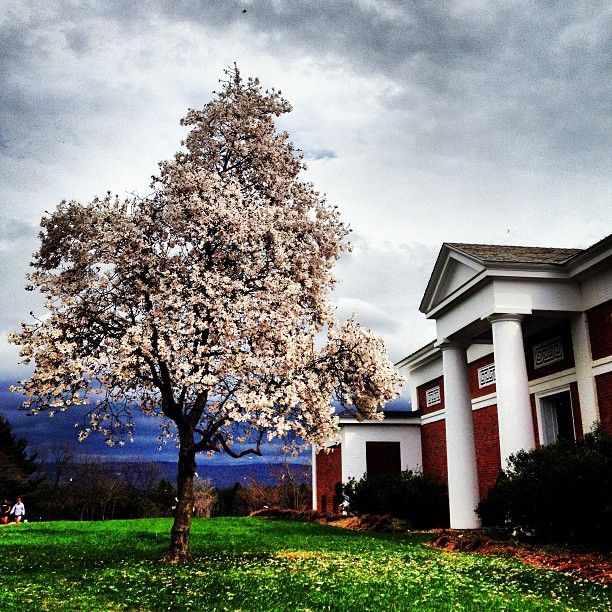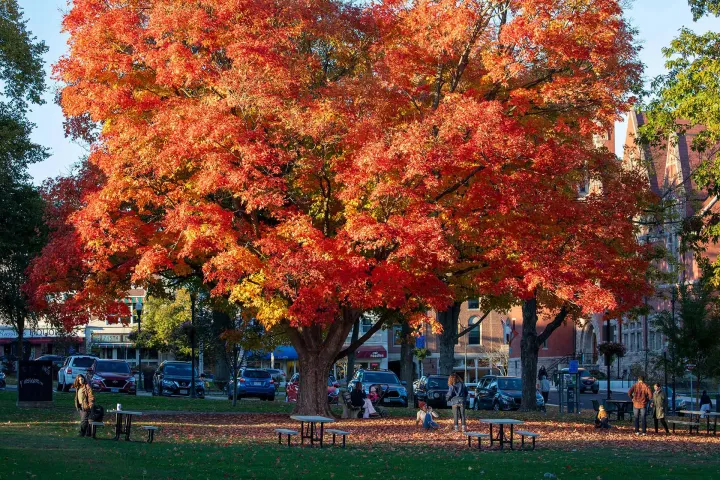The World, Seen: On the Study of Beauty

I am a senior. I have completed the senior thesis process. I have nearly completed my final undergraduate classes. In a mere thousand words, I will have completed my tenure as a columnist for The Amherst Student. Although Amherst College frequently reminds me (now and forever) that my financial responsibility to Amherst is unending, Amherst has (nearly) fulfilled its educational responsibility to me.
The wide body of course offerings available to all Amherst students and a freshman-year interest in friendship have led to my primary interest, beauty, occupying less than a third of my collegiate coursework. Nevertheless, I think one could reasonably characterize the lens cast by my Amherst education as the aesthetic lens, to stay with me as I leave the College on the Hill and return to the rest-of-the-world. The aesthetic lens is not the kind of lens that I can choose to apply in times of need; it is the kind of lens that, when my eyes are open, I am looking through. It is the kind of lens through which all of my experiences of the world will be determined.
(A side note: I began this biweekly column at the beginning of the year with the stated intention of seeking and grounding the value attributed to beautiful objects. Writing a final column on that subject seems in itself presumptuous, whether it makes any claim at summary or conclusion or not. Instead of writing that final column, I have decided to pull what I call a Post-Modern Disappearing Act. That’s where, instead of finishing a story, you make the author a character of the story, explain that character’s state, and then make that character stop talking, which effectively ends the story by cutting off its source. Think Kurt Vonnegut in “Breakfast of Champions,” or Lemony Snicket in “A Series of Unfortunate Events.” You’ve been warned.)
Pragmatically, beauty is a beneficial thing to study. It is an especially beneficial thing to study in the springtime, when one might meander around a freshly blooming landscape and wield the aesthetic lens in experiencing the natural world at the peak of its vibrancy. Amherst blooms at the same time that Amherst’s academic year concludes, reminding me of the value of my education at just the time that that education ceases.
The effect of using such a lens is twofold: enhanced attentiveness and enhanced consciousness. The former, attentiveness, yields the joy of the naturalist: the more of the experienced world that is really seen — paid attention to, noticed — the more that it can be enjoyed. The latter, consciousness, yields the joy of the scholar: the more one is conscious of the causes and characters of one’s own enjoyment among nature’s vibrancy, the more one can allow (and seek for) him-or-herself that enjoyment, conscious of its sources and its phenomenological character.
Of course, the study of beauty has no monopoly on these enhancements of the experience of the world. To the contrary, although beauty may be more directly related to perceptual experience than other fields and subfields taught at Amherst College, one might think of the liberal arts education in general as fostering these experiential enhancements. For the biologist, spring brings changes in lifecycle and the renewal of vitality; for the painter, spring brings green out of white and pronounced shadows out of a clouded winter. For the aesthetician, spring brings vibrancy and beauty.
In this way, all graduates (and, indeed, all current students) will leave campus this month with a lens, or perhaps a keychain-collection of lenses, which enhance their experience of the world. Some of these lenses target person-to-person interactions, some target interaction with entertainment media (like books, movies or this very article), and some target the pleasure we take in the perception of certain objects. Each fosters either attentiveness or consciousness, and many (most?) foster both, in varying degrees.
One distinctive aspect of the Amherst education is its insistence on eight semesters of classwork. You took four lecture classes this semester? 16 credits. Four classes, two of which had labs? 16 credits. Six classes? 16 credits. No matter what, you get just enough credits to earn a diploma after eight semesters. One way to justify this arrangement is to think of Amherst dormitories as lens trading posts. You have a cultural anthropology lens? I’ll trade you my aesthetic lens for it! Two hours later, the trade is complete, though ultimately both parties maintain the lenses they ‘trade’, and merely add their interlocutor’s lens to their own collection, to permanently determine the content of their experiences of the world. After eight semesters in those trading posts (or select other trading posts around the world), the diploma is yours.
I have spent significant time at Amherst College crafting my aesthetic lens, exercising every resource to spin and cut and polish that lens into proper form. My aesthetic lens has greatly helped me in my quest to determine what I should do and how I should act. I thank Amherst College for providing the tools with which it has been crafted. I have used this column in two ways: as an act of polishing my lens, and as a medium through which I provide that lens, at minimal cost and with the greatest clarity that I can muster, to you the reader. My eight semesters completed, I leave Amherst College in search of tools to polish my lenses all the finer, and trading posts that can in some way replicate that which Amherst has so graciously and commendably provided.




Comments ()